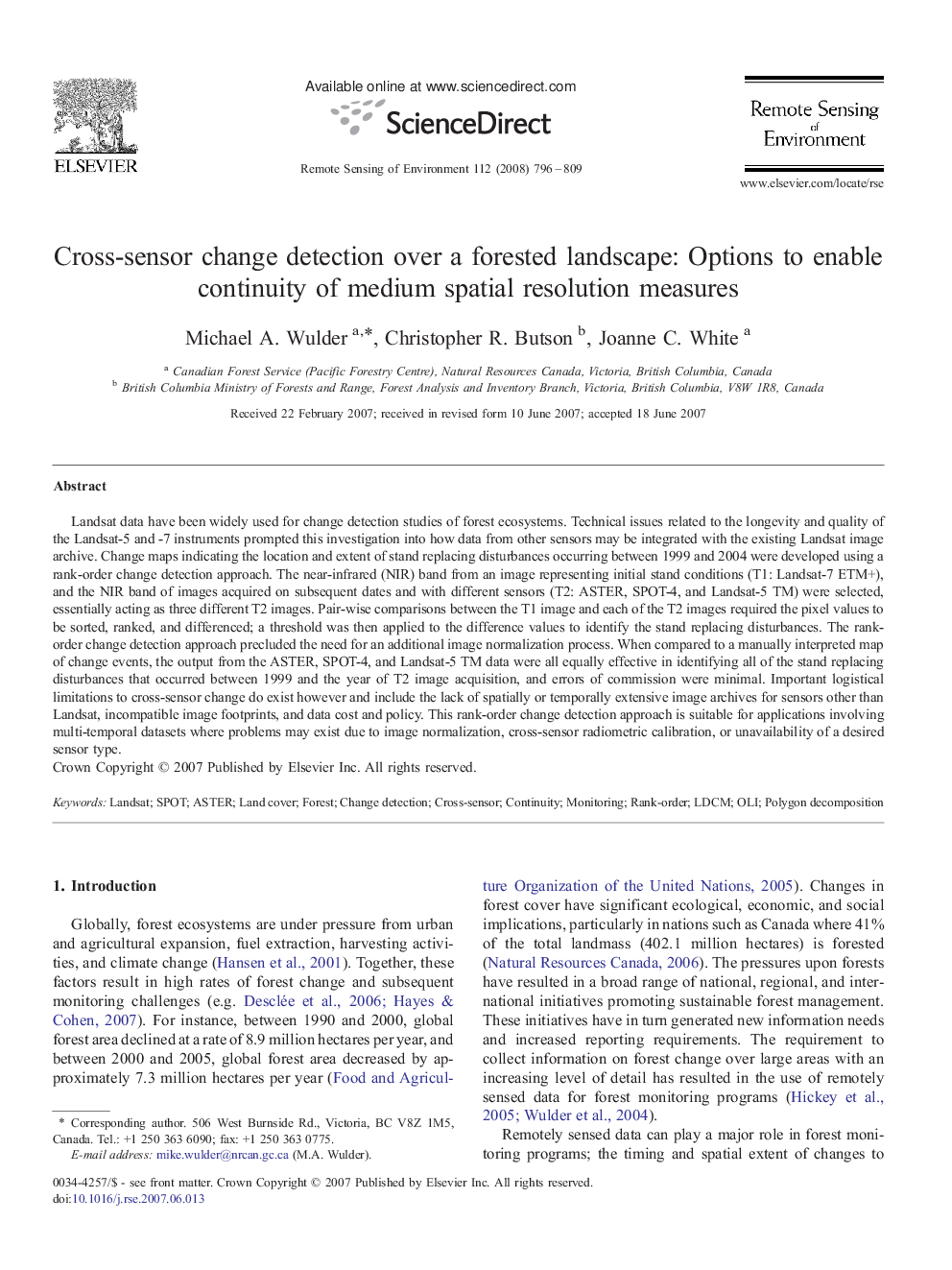| Article ID | Journal | Published Year | Pages | File Type |
|---|---|---|---|---|
| 4460449 | Remote Sensing of Environment | 2008 | 14 Pages |
Landsat data have been widely used for change detection studies of forest ecosystems. Technical issues related to the longevity and quality of the Landsat-5 and -7 instruments prompted this investigation into how data from other sensors may be integrated with the existing Landsat image archive. Change maps indicating the location and extent of stand replacing disturbances occurring between 1999 and 2004 were developed using a rank-order change detection approach. The near-infrared (NIR) band from an image representing initial stand conditions (T1: Landsat-7 ETM+), and the NIR band of images acquired on subsequent dates and with different sensors (T2: ASTER, SPOT-4, and Landsat-5 TM) were selected, essentially acting as three different T2 images. Pair-wise comparisons between the T1 image and each of the T2 images required the pixel values to be sorted, ranked, and differenced; a threshold was then applied to the difference values to identify the stand replacing disturbances. The rank-order change detection approach precluded the need for an additional image normalization process. When compared to a manually interpreted map of change events, the output from the ASTER, SPOT-4, and Landsat-5 TM data were all equally effective in identifying all of the stand replacing disturbances that occurred between 1999 and the year of T2 image acquisition, and errors of commission were minimal. Important logistical limitations to cross-sensor change do exist however and include the lack of spatially or temporally extensive image archives for sensors other than Landsat, incompatible image footprints, and data cost and policy. This rank-order change detection approach is suitable for applications involving multi-temporal datasets where problems may exist due to image normalization, cross-sensor radiometric calibration, or unavailability of a desired sensor type.
